Three critically endangered Sumatran tigers were found dead near an oil palm plantation in Aceh province on the Sumatran Island of Indonesia after being trapped by snares.
On the 24th of April, a female tiger was found dead in Northern Sumatra, her head and leg almost severed from a snare. Just five hundred meters away, the bodies of a male and female tiger were also found, both with leg injuries.
Sumatrans are one of the most critically endangered tiger species in the world, with only around 400 estimated to remain in the wild. The species’ decline is largely due to the rampant destruction of its rainforest habitat, the resulting increase in conflict with humans and the direct and indirect threats from poaching. This latest blow to the species comes as the lasting effects of COVID are exposing them to increasing risks.
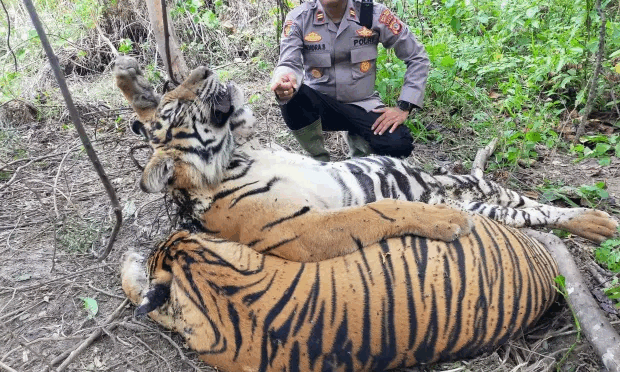
Images of the Sumatran tigers found dead in 2022 from East Aceh Police/AP
There is a worry that the coronavirus pandemic has led to increased poaching as villagers turn to hunting to supplement diminished incomes. Meanwhile, budgets set aside for the protection of tigers and their habitats have been slashed by governments looking to reallocate funds toward COVID-relief operations. This has led to a reduction in rangers across tiger habitats a drop in morale for those left.
Rangers are fundamental in tackling the problem of snaring, often removing multiple snares a day on their patrols. They are also able to perform small scale wildlife first aid or alert a wildlife vet if there is an animal who needs de-snaring.
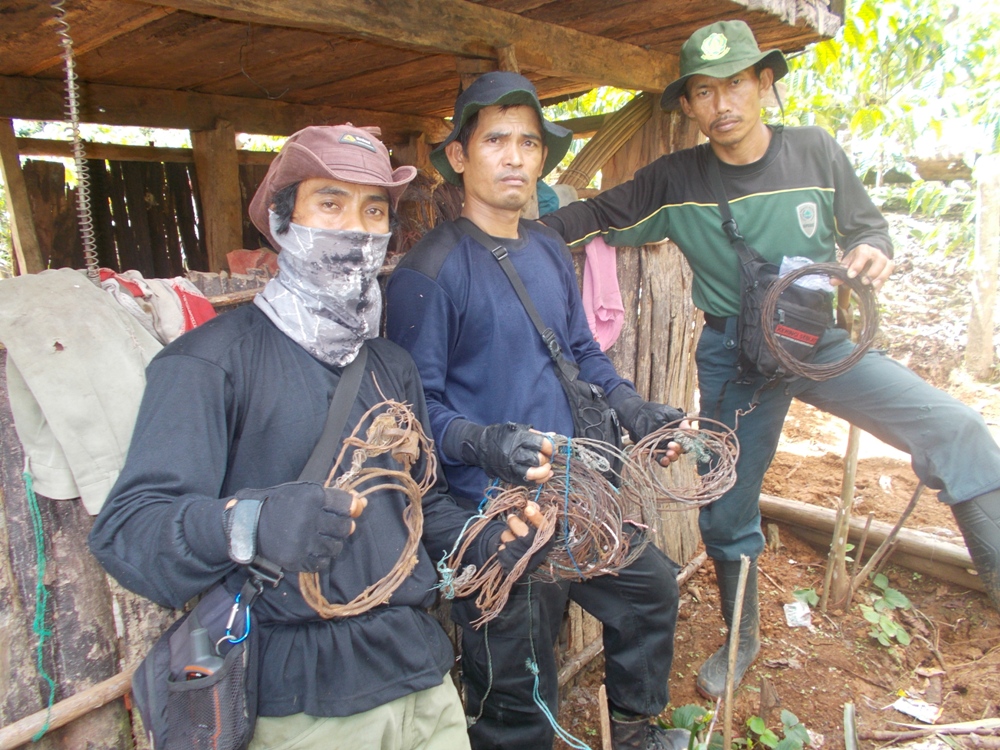
Rangers with deactivated snares in Indonesia in 2017 ©Lingkar

Rangers rescuing a tiger from a snare in Indonesia in 2014 ©FFI
Snaring explained
A snare is a long piece of wire or rope attached to a tree with a loop at the end which catches an animal by the neck or leg as it is passing. Once caught, they panic and continue to pull at the snare making it tighter and tighter. If the snare is around their neck and strong enough, the animal will suffocate. Alternatively, if it is around their leg, they are trapped and can starve to death.
If a tiger is lucky enough to break free the prognosis is still not optimistic. They either break the snare from its base with the loop still attached to them causing constant constriction, swelling and pain. Alternatively, tigers may pull and chew at the leg until they lose the limb and break free. Both scenarios will likely lead to a prolonged and painful death as the animal struggles with the resulting infection and a reduced food intake as they are unable to hunt.

Malayan sun bear foot caught in a tiger snare in 2015 ©FFI

Malayan tapir caught in a tiger snare in 2015 ©FFI
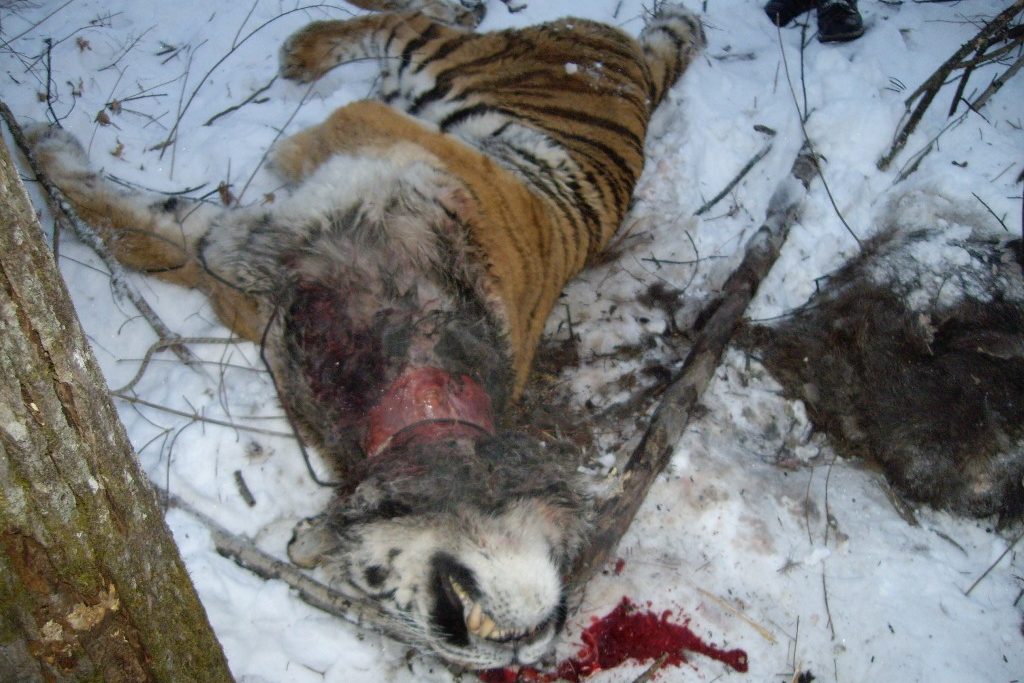
Amur tiger trapped in a snare in 2008 ©Phoenix Fund
Depending on the target species the snares look a little different. Small, thin snares are set lower to the ground to trap deer and wild boar. These prey species are illegally hunted in protected areas to subsidise the protein intake of local people and as a source of income through the domestic market for bushmeat. Larger, thicker snares are set higher up to trap bigger animals like tigers to fuel the commercial, international illegal trade of tiger parts. It is important to distinguish between these motivations for snaring to enable us to address the crises effectively.
Subsistence poachers and domestic commercial poachers
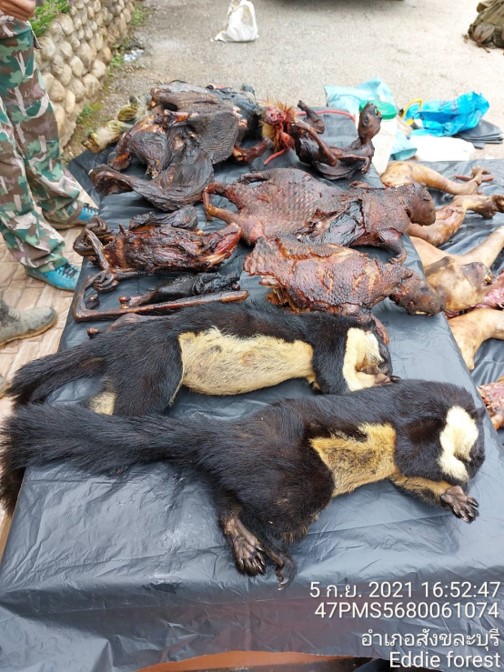
Bushmeat poached in Thailand in 2021 ©Freeland
Many of the world’s poorest people living in rural areas depend on the forest and bushmeat like deer and wild boar for their nutrition and livelihoods. It is incredibly important to understand the socioeconomic and nutritional context of commercial and subsistence bushmeat hunting to enable us to correctly understand ways of reducing people’s dependence on wildlife, while meeting their livelihood needs and resolving their lack of resources.
From a subsistence perspective, access to wild animals is often the only source of protein available for some of the world’s poorest communities who are driven to poaching by food insecurity. With global economies ravaged by COVID-19 there has been rising unemployment among communities living in tiger range countries and it is anticipated that this could lead to an increase in illegal resource extraction. While economic development may drive down the need for subsistence hunting as an essential protein source it can drive up the demand for bushmeat as a luxury product in cities in the form of non-essential consumption.
The demand for bushmeat might not necessarily be directly targeting wild tigers, but it has devastating impacts on their survival. In practice, snares indiscriminately kill and maim animals of all species with tigers regularly caught in snares set for wild boar and deer. Furthermore, growing domestic demand for bushmeat has depleted the population of tiger prey species which leads to cascading effects in the wider ecosystem, disrupting food chains, pollination and seed dispersal. And, as we all know too well, the consumption of bushmeat also increases the risk of emerging infectious diseases.
Commercial poaching to supply the international illegal trade of tiger parts
In comparison, the illegal global wildlife trade does not fulfil any essential consumption needs. Instead, this trade is a multi-billion-dollar market and one of the most lucrative transnational crimes involving networks of highly organised criminal syndicates.
While many experts are concerned that the lasting impacts of the pandemic have left tigers even more vulnerable to mounting threats, they did receive some respite from the international trade during the pandemic. As people the world over struggled to travel as a result of COVID restrictions, it was no different for those responsible for satisfying international demand for tiger parts. However, as international travel restrictions are being lifted this also reopens illegal trade routes. Experts are closely watching for any changes in snare detection or other evidence of poaching which could quickly undermine any reductions in tiger poaching during the pandemic.
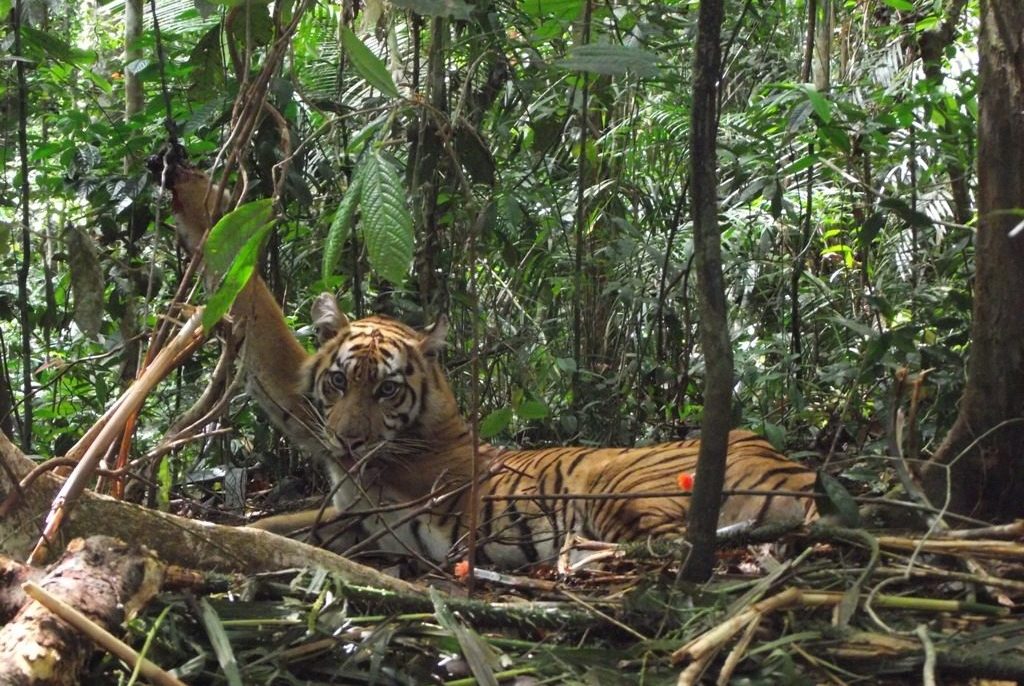
Tiger caught in a snare in 2012 ©FFI
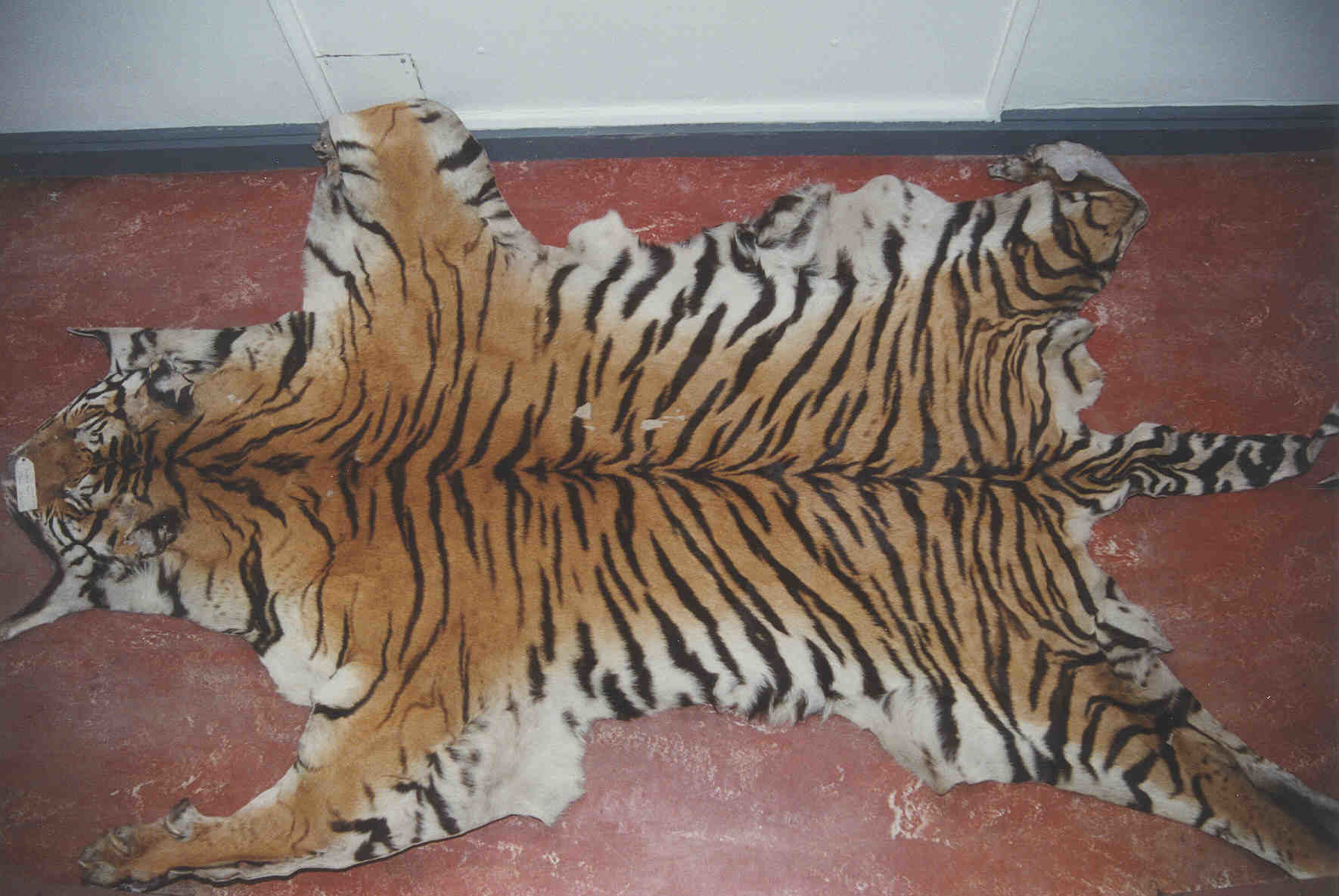
A confiscated tiger skin

Wildlife bones in Russia

Products containing tiger derivatives
Solutions
The scale and complexities of wildlife consumption, make it a very challenging problem to solve. Having adequate numbers of properly paid rangers with sufficient equipment is certainly essential to provide immediate protection to endangered species and their wider ecosystems. However, due to the multifaceted nature of this issue, attention must also be focused on poverty alleviation to reduce the dependence on poaching for nutrition and livelihoods. Reducing demand through awareness-raising and behavior-change campaigns must also be a core component of tackling the issue of poaching whether it be the demand in domestic markets for bushmeat or in the wider international context for wild animal parts. Only by tackling both ends of the supply chain will we be able to change the trajectory of the current wildlife crisis.



